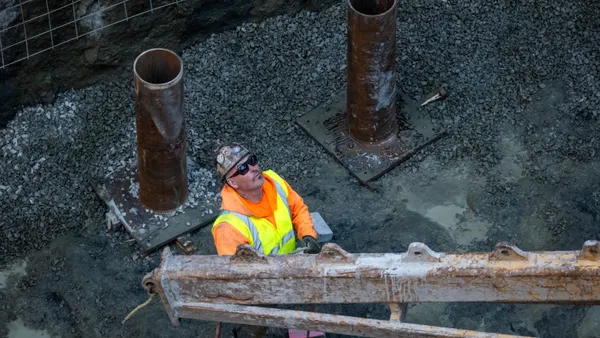Dive Brief:
-
Dallas-Fort Worth, TX, is now the top market for new residential construction in the U.S. after trailing Houston since 2010, according to Builder Magazine's annual ranking of the top 50 new-home markets by closings.
-
Three other Texas markets made the list's top 10 in 2017: Houston/The Woodlands/Sugar Land (No. 2); Austin/Round Rock (No. 5); and San Antonio/New Braunfels (No. 9).
-
Overall, the South and Southwest dominated the list, with Atlanta/Sandy Springs/Roswell, GA; Phoenix/Mesa/Scottsdale, AZ; the greater Washington, DC, metro area; Orlando/Kissimmee/Sanford, FL; and Charlotte/Concord/Gastonia, NC, rounding out the top 10.
Dive Insight:
Strong population growth in Texas is spurring demand for housing, pushing home sales and prices to new highs. A recent report from Texas A&M University's Real Estate Center found that homes in the state averaged a record 55 days on the market. Meanwhile, homes are on the market for just 30 days in Fort Worth and 31 days in Dallas. Overall, the state has a four-month supply of inventory, with North Texas reporting three months of stock.
Meanwhile, a recent comparison study by CityLab found that Phoenix was best-equipped to handle its current demand based on the volume of new, unoccupied residential inventory there. The report examined population increases in the 10 fastest-growing U.S. cities against the number of people the new housing stock could accommodate. Arizona’s capital city is undergoing a revitalization of its downtown as tech-driven development spurs new demand for urban living in the area.
According to CityLab’s analysis, Dallas and Fort Worth are making strides toward improving housing availability, too.
Atlanta is also gearing up for a population shift as the metro area expects to more than double its headcount by 2040. The city council in May voted to allow tiny houses and other accessory dwelling units with an amendment that updated a size-restrictive zoning ordinance to allow homes less than 750 square feet to be built in certain areas of the city. The move seeks to make smaller and typically more affordable housing options available in some of the metro's most popular areas.












